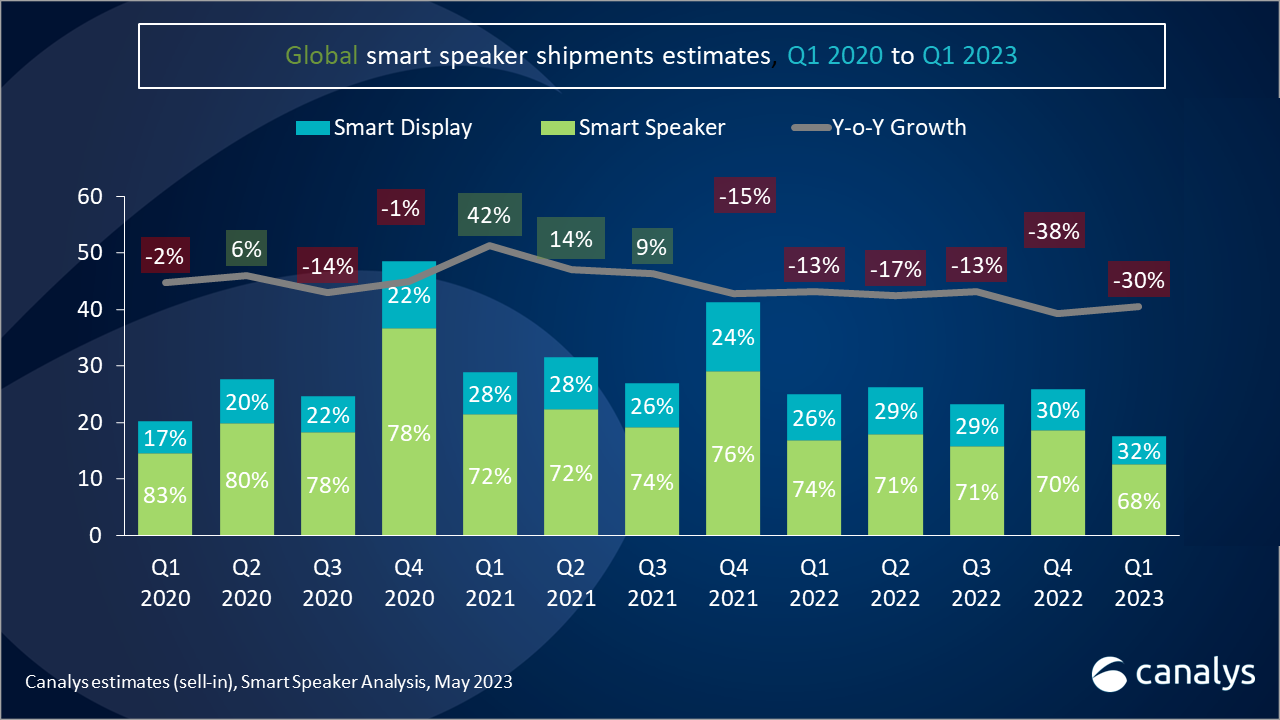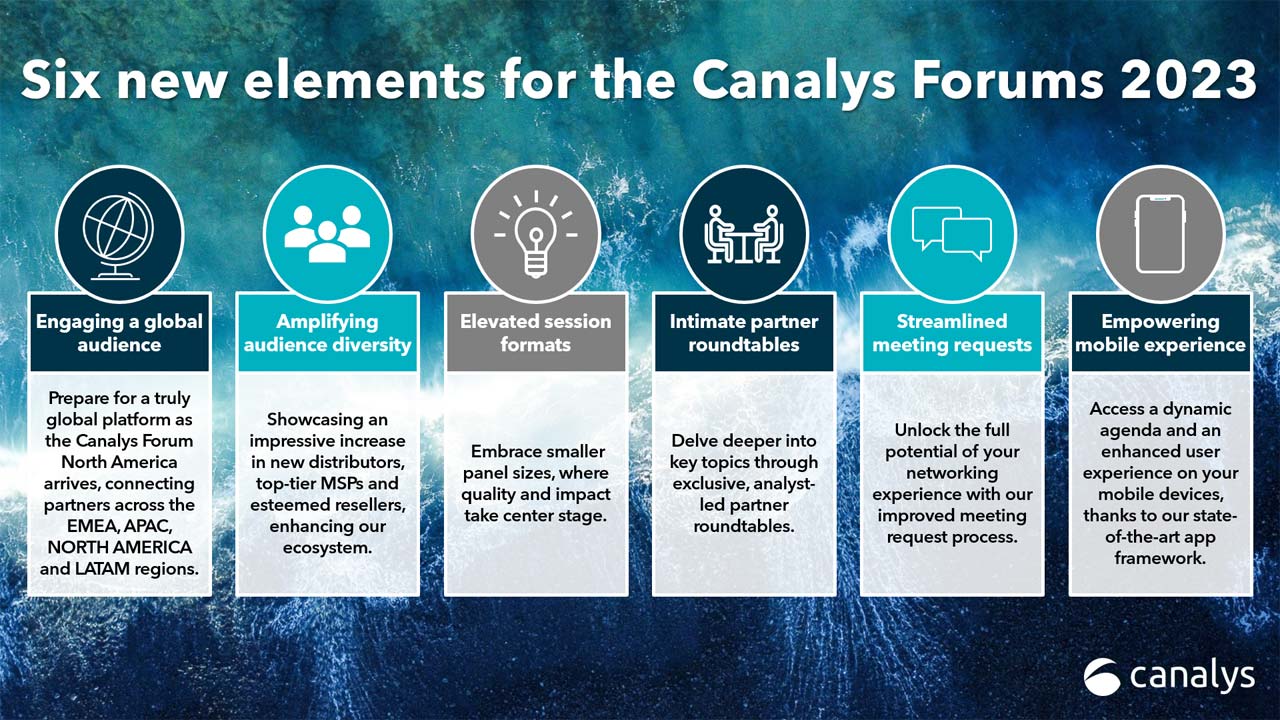
Pax8 looks Beyond the cloud marketplace with new partner tools
At Pax8’s inaugural partner event, Beyond, the cloud marketplace and distribution specialist announced several new tools that could have a big impact on its customers’ businesses.
Following on from the inaugural Pax8 Beyond conference in Colorado, US in June, Canalys breaks down some of the product and partner enablement announcements from the marketplace provider and analyzes the likely impact of these changes.
Pax8 hits (nearly) 30,000 partners in its cloud marketplace
During the conference keynote, Pax8, the US-headquartered distributor and cloud marketplace, gave some top-line numbers on its performance. It currently has 92 vendors in its marketplace, with 13 new additions coming soon. It has over 29,000 channel partners, serving more than 300,000 customers, and a total of 10 million users in 53 countries. As a major Microsoft Indirect Provider, the company still makes the majority of its revenue from Microsoft products and services, but it has built a strong strategy around its cybersecurity vendors, including SentinelOne and CrowdStrike. Cybersecurity is growing at an estimated 100% YoY for Pax8, and along with its broader portfolio of vendors, now makes up approximately 40% of its total revenue.
At the end of 2022, Pax8 announced it had hit US$1 billion in annual recurring revenue run rate, suggesting it was making over US$80 million in monthly recurring revenue at its peak. It was valued at US$1.7 billion in early 2022 after a funding round of US$185 million in early 2022, which included investments from SoftBank and Sageview Capital. The company expects continued growth in 2023, helped by ongoing expansion outside of North America (which still accounts for the largest share of revenue). In Europe, it has made several acquisitions since 2021, including Wirehive, Resello and TVG, and in 2022 it launched operations in Australia and New Zealand. Most recently, it bought Microsoft Dynamics specialist Bam Boom Cloud in the US.
All these figures show that the company, which probably above all others represents the evolution many have expected of distributors for some time, is under pressure to maintain its strong growth, both financially and in terms of innovation. It has brought in new figures to its executive team, including Puneet Pamnani as CFO, who is also experienced in building toward an IPO, and Rob Rae as CVP of Communities and Ecosystem, a channel veteran well thought of by the MSPs Pax8 has built its business around. Pax8 had previously stated that it expected to be EBITDA-positive by early 2023. If it is looking to go public in the near future, profitability will need to be a key pillar of its strategy.
The evolution of Pax8 will force other distributors to improve their value-creation strategies
Pax8 made several announcements regarding its product development strategy. It announced an updated user interface for its marketplace, as well as a new configure-price-quote system, which would allow partners to add software, services and hardware into one deal and publish this in a fully branded storefront. The customer of the channel partner would be able to get support, self-service, buy solutions and accept quotes within the system.
The addition of the hardware piece is new for Pax8 and signals its intention to be a more comprehensive marketplace for partners. It aims to eliminate the need for partners to seek any of their technology stacks from other marketplaces or distributors. This is a significant change, and it will mean having to manage hardware delivery and logistics in a way it has never done before, investing in new professional services and support skills for these products, as well as placing itself within the sights of competing distributors.
The final piece of the puzzle, and one that possibly shows the most ambition, was its announcement that it would be seeking to help partners upsell and cross-sell to customers using analytics to generate recommendations for gaps in customers’ IT estates. Pax8 also wants to take end-customer data and create a partner-customer matching service to drive lead generation, something that, if successful, could be a massive value driver for MSPs and other channel partners that struggle to build pipeline organically and that could position Pax8 as a key part of the lead-creation channel for its vendors. If it can execute this step without alienating partners fighting over the same deal, this will be a transformative development. These features will be rolled out to select partners in beta in the fall of 2023.
Pax8 is at a major crossroads in its growth and its position in the distribution space for vendors. For too long vendors have been debating the value of distribution in a SaaS world, but these kinds of tools, led by AI, to improve cross-sell and upsell to existing customers, as well as generate new leads for channel partners, are major steps forward. If it can successfully do this across hardware, software and services, Pax8 will be stepping into a future that goes beyond marketplaces and distribution.
Share this article
CATEGORY
- All
- Canalys Forums
- Canalys Forums,Channels
- Canalys Forums,Channels,Partner Program
- Canalys Forums,Channels,Sustainability
- Canalys Forums,Sustainability
- Enterprise
- Market
- Market,Canalys Forums,Channels
- Market,Canalys Forums,Channels,Cloud
- Market,Canalys Forums,Channels,Sustainability
- Market,Channels,PC
- Market,PC
- Market,Smartphone
- Market,Technology,AR/XR/VR
- Market,Technology,Automotive
- Market,Technology,Canalys Forums,Channels
- Market,Technology,Canalys Forums,Channels,Cloud
- Market,Technology,Channels
- Market,Technology,Channels,Cloud,Partner Program
- Market,Technology,Smart Personal Audio
- Market,Technology,Smart Speaker
- Market,Technology,Smartphone
- Smart Personal Audio
- Smartphone
- Technology
- Technology,Canalys Forums,Channels,Security
- Technology,Channels
- Technology,Channels,Cloud,Partner Program
- Technology,Channels,Partner Program
- Technology,Unified Communications
- Technology,Wearable Band

